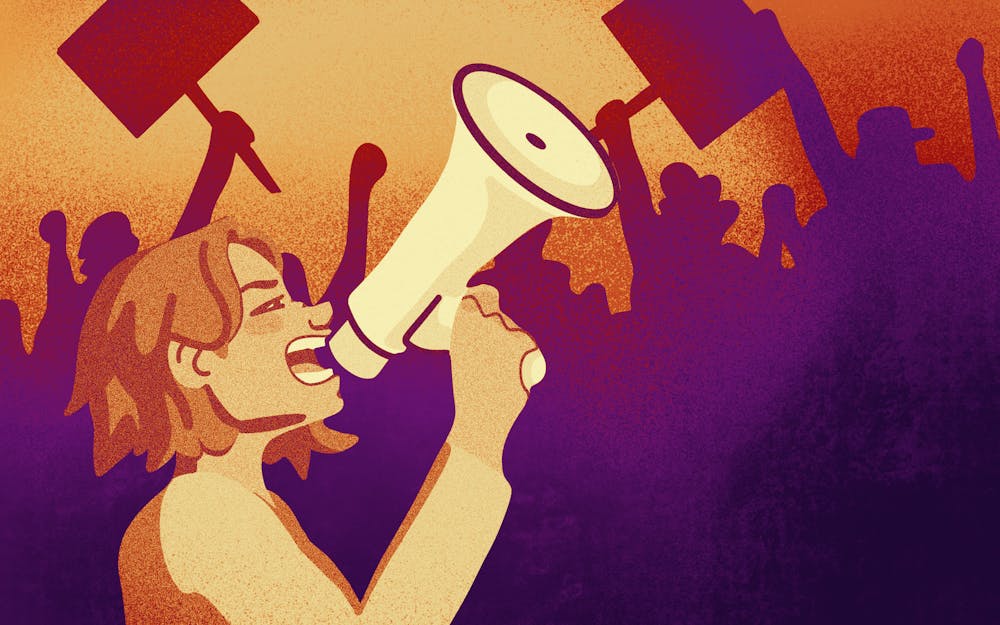Let’s be honest: sometimes it feels like the world is a dumpster fire and there is nothing we can do to solve all of the problems that arise on a day-to-day basis. I get that. I feel it too.
Sometimes, I wake up, and it is all I can do to be the good, informed citizen I am and read the news because I know what it is going to say. “There have been more mass shootings than days in 2023,” or “Kentucky senator freezes during another interview” or “The beginning of World War III?”
How are we supposed to fix all of the problems at once and not let any of them fall to the back? I get it. I really do. It’s overwhelming.
However, as I sit and tap through my Instagram stories throughout the day, I see infographic after infographic of people claiming to be activists. Here’s the thing though; unless you are an influencer or celebrity with thousands of followers watching that story, the infographic is doing little to nothing.
The majority of people who are watching your post have seen the same infographic at least a dozen times. There are good odds that if they didn’t read it the 12 times before, number 13 isn’t going to be much different. You are never going to convince somebody to care over Instagram.
Infographics are good for one thing: the spread of information. They often compartmentalize information into easily digestible fragments that give information in a quick and snappy medium. It’s great for those who are trying to understand topics as complex as new legislature, an international conflict or issues with complicated historical context.
In reality, however, they don’t do more than that. By no means am I encouraging you to stop re-posting infographics, but you can’t call yourself an activist if that is all you are doing for a cause.
I understand not everybody is in the position to donate money, but there are a handful of other ways to get involved and make a true difference in the cause you are trying to support.
[Related: MCCSC students, parents, teachers organize rally against schedule change]
For example, the easiest is petitions. For any cause, there are probably a dozen petitions going around trying to gather signatures to show the government or organization responsible for the problem that the people don’t stand for it. It makes a request and gathers signatures to back it up.
All you have to do is sign them. In the digital age, it is as simple as clicking a link and writing your name down.
Liking and sharing on social media is still a great way to be an activist, so long as you are selective with what you share. Petition links are a great thing to post all over your social media accounts. Same with links to donation sites. Just because you can’t donate doesn’t mean your friends and family can’t.
Organizations such as the Human Rights Campaign and Amnesty International are always accepting donations and their mission is more focused on human right violations rather than one specific topic.
However, with a little bit of research you can find a trustworthy organization to donate to. There are certain organizations that are known nationwide for a reason. March for Our Lives, Habitat for Humanity, National Network for Abortion Funds are all household names that have made big impacts on human rights violations. Look at the organization's impact page. It will help you understand where your money is going and if the organization is making a difference.
Another way to truly make a difference in your cause is to get out and protest. It is your right as a citizen of the United States to go out and peacefully protest something that you disagree with or believe to be an injustice.
Go out and make your voice heard. Email and call your local officials. Demand change and hold elected officials accountable.
Volunteer for an organization that supports your cause. Most organizations supporting human rights causes or any other cause are most likely non-profits and are in need of a hand. They will always accept help, and it provides you with an opportunity to get out and help while also learning more about the cause.
All of these are great ways to get involved and do a lot more than a mindless like and repost. Because let’s be honest, did you even read the infographic all the way through? Probably not.
It can seem scary and intimidating to take larger steps towards activism, but it’s either that or sit back and watch the world go up in flames. It is our job as citizens to stay informed on the world around us and to take action when things aren’t right.
Start simple; sign a few petitions, have an open conversation with friends or family, hear others out, share factual information with others. Don’t feel pressure to do it all. As mentioned at the beginning, it can feel overwhelming to solve world peace. It's not possible to tackle it all.
It’s difficult to decide which cause to devote your time to but remember that you are only one person. Maybe choose the timeliest issue going on now. Currently, it is likely the Palestine and Israel conflict. Maybe choose the issue that affects you the most, so for me, it would be women’s rights such as reproductive freedom.
Don’t let the darkness of the world consume you, but don’t sit back and watch it happen. Get up and make your voice heard. That’s the beauty of a democracy.
[Related: IU faculty, students call for Whitten to acknowledge Palestinian suffering]
Anything helps, so truly don’t be afraid to post those infographics. Just make sure that you do a little more when you hit post and encourage those around you to do the same. Don’t lose hope in the world quite yet.
Gentry Keener (she/her) is a junior studying journalism and political science.






